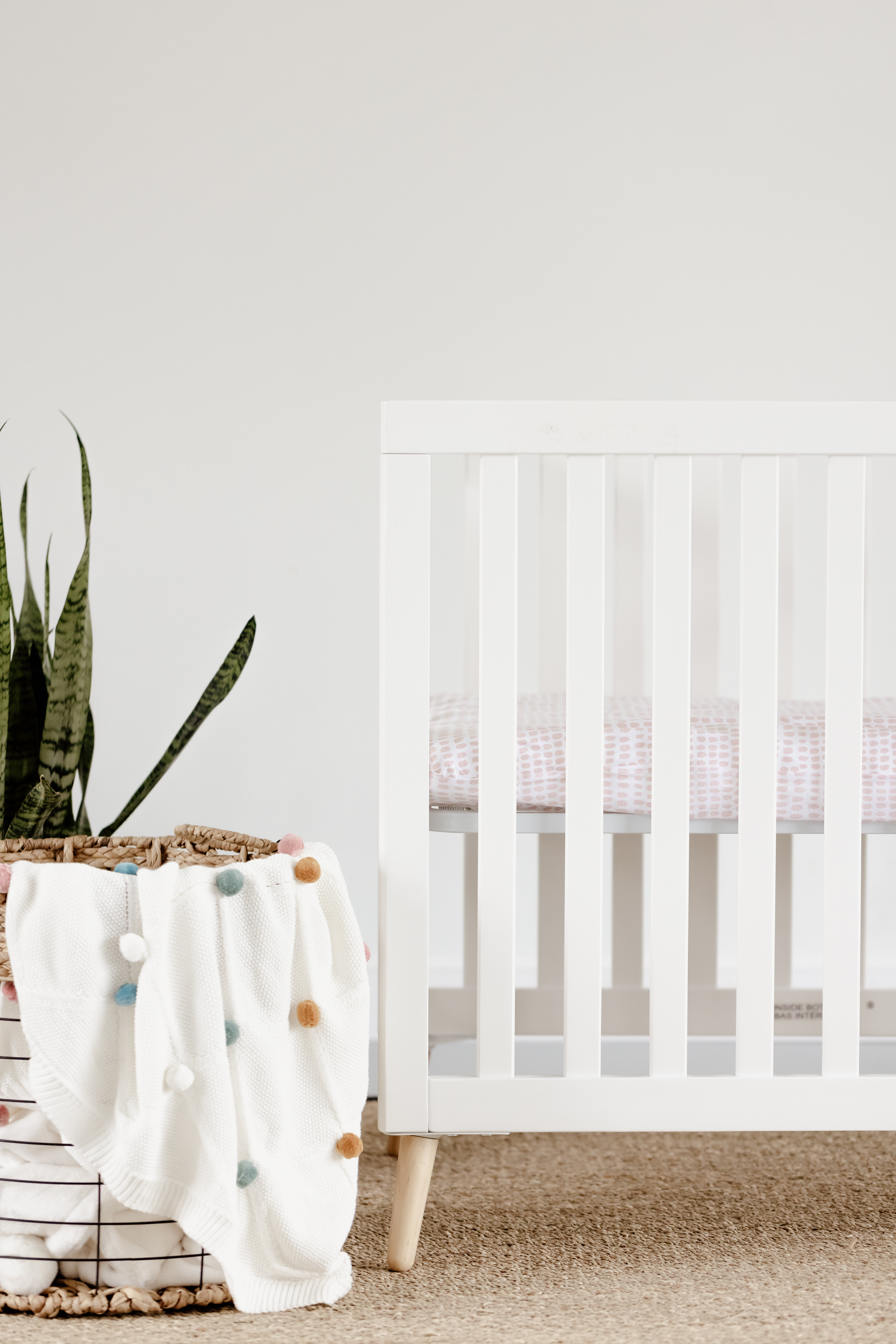5 Tips to Help Your Baby Fall Asleep Without Being Held
Teaching your baby to sleep without being held can feel like a big task, especially when they’re used to the warmth and comfort of being in your arms. But, helping them develop independent sleep habits early on can lead to better rest for everyone.
With these 5 tips and some patience, your baby will learn to sleep peacefully on their own for nap time.
Here’s how to encourage your little one to sleep without being held:
1. Swaddle for Every Nap
If your baby is not showing signs of rolling over yet then swaddling is one of the most effective ways to help your baby sleep without being held. It mimics the snug environment of the womb, and decreases the Moro reflex from waking your baby up when you lay them down.
The Moro reflex, also known as the startle reflex, is an involuntary response that newborns have in reaction to sudden changes in movement or loud noises. You will usually see your baby’s arms flail out, their legs may stiffen, and they might cry out. This reflex is completely normal and typically lasts until about 3-4 months of age.
While the Moro reflex is a natural part of your baby’s development, it can disrupt sleep, as the sudden jerking movements often wake them up. This is where swaddling comes in!
Swaddling helps by gently wrapping your baby’s arms close to their body, which limits the flailing movement that can occur during the Moro reflex. This will help your baby fall asleep without being held.
The snug feeling of the swaddle mimics the secure environment of the womb, helping to calm your baby and keep them asleep for longer stretches—leading to more peaceful naps and better nighttime sleep!
When swaddling, make sure it’s snug but not too tight, and always leave room around the hips and legs for movement. Use the swaddle consistently for each nap, so your baby begins to associate it with sleep. As your baby grows, you can transition to a swaddle with arms out or a sleep sack to maintain that cozy sleep environment.
2. Use White Noise
The world can be full of unexpected sounds—dogs barking, doorbells ringing, or even everyday household noises. White noise creates a steady, calming sound that can drown out these distractions, helping your baby stay asleep longer.
It also replicates the sounds of the womb, where your baby was surrounded by constant noise. Play white noise during every nap and at bedtime to create a consistent sleep environment. Whether it’s a white noise machine or a simple app, it’s an effective tool in your sleep routine.
3. Follow Wake Windows
Knowing your baby’s wake windows is key to better sleep. This tool will help your baby fall asleep better without being held.
If you have a 0-4 week old then your baby’s wake window is between 35-60 minutes
If you have a 4-12 week old then your baby’s wake window is between 60-90 minutes.
If you have a 3-4 month old then your baby’s wake window is between 75-120 minutes.
Missing these wake windows often leads to an overtired baby, which can make it harder for them to fall asleep or stay asleep.
Track your baby’s wake windows throughout the day and aim to start the nap routine before they become overtired. Sleep comes much easier when your baby isn’t overstimulated or too tired.
4. Practice With the First Nap of the Day
The first nap of the day is often the easiest for babies since they’re still well-rested from the night. Begin practicing putting your baby down for this nap when they are awake. Gradually, as your baby masters this first nap without being held, you can expand the practice to later naps.
Remember, this is a learning process for both you and your baby. Take it one nap at a time, and celebrate small wins!
If your baby is under 4 months old and you have gotten one or two naps in your baby’s crib the next step is to follow an Eat, Play, Sleep Routine. This routine helps you get into a good rhythm for the day and easily teaches your baby to fall asleep on their own without being held.
5. Avoid Overtiredness
Overtired babies are often fussier and harder to soothe, which can make independent sleep feel impossible. If your baby is under 4 months old watch for early sleepy cues—crying is a late sign of tiredness. By catching these signs early, you can avoid overtiredness and make the transition to sleep much smoother.
Ready to Help Your Baby Sleep Better?
These 5 tips—swaddling, white noise, following wake windows, and avoiding overtiredness—will help your baby sleep peacefully without needing to be held for every nap. But every baby is unique, and sometimes you need a personalized approach.
Your baby can learn to fall asleep without being held!
If you’re struggling with your baby’s sleep routine or need extra support, I’d love to work with you one-on-one! As an experienced sleep consultant and postpartum doula, I can guide you through this process, offering personalized advice and support. Let’s work together to create a plan that works for your family so you can enjoy better rest and more peaceful naps.
Schedule your free sleep evaluation call today and start your journey to better sleep for you and your baby!

